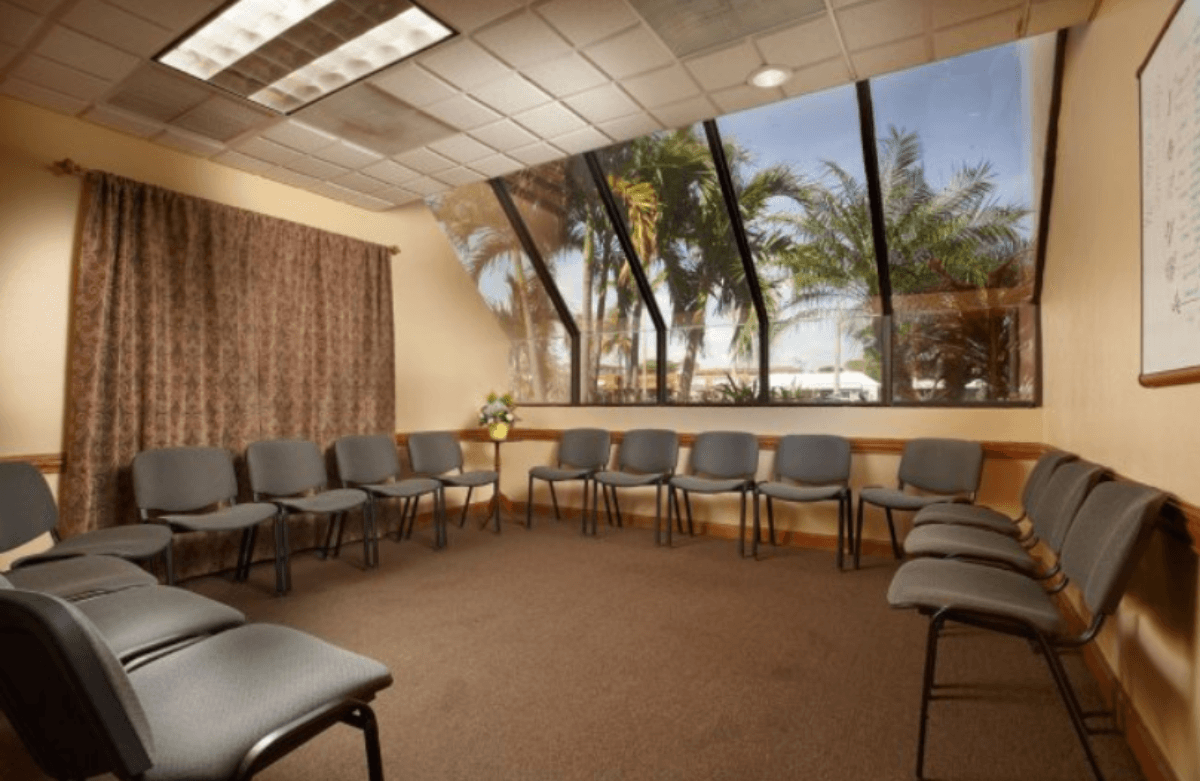 Addiction is a huge struggle, and it takes a toll on the individual and the family. But because of the high rehab costs, only a few of them get addiction treatment. On the flip side, when you look at the bigger picture, the cost of treatment is nothing in comparison to what you spend in health care and drugs in the long run. When you get help today, you will improve your quality of life and save a lot of money.
Addiction is a huge struggle, and it takes a toll on the individual and the family. But because of the high rehab costs, only a few of them get addiction treatment. On the flip side, when you look at the bigger picture, the cost of treatment is nothing in comparison to what you spend in health care and drugs in the long run. When you get help today, you will improve your quality of life and save a lot of money.
Also, instead of shying away from treatment because of the costs involved, you should look for solutions. With a little bit of research and calls to the right people (drug addiction hotlines), you’ll see your options. These include payment plans and leveraging insurance plans. According to US laws, insurance companies should cover mental health and addiction treatment.
In this piece, we shall lay bare the costs of addiction treatment. However, the figures aren’t to scare you but to open your eyes to the options that are staring right at you. So without wasting time, let’s jump into it.
Contents
- 1 The cost of rehab
- 2 How you can pay for rehab
- 3 Factors influencing rehab costs
- 4 Benefits of getting drug rehab treatment
- 5 Conclusion
- 6 FAQs
- 6.0.1 How do I know how much my insurance plan covers?
- 6.0.2 Can I get in trouble for calling a drug addiction hotline?
- 6.0.3 Do I pay for the addiction hotline?
- 6.0.4 Can I do the treatment on my own?
- 6.0.5 How can I overcome the stigma of addiction and attending a rehab facility?
- 6.0.6 Will I still have my job after attending rehab?
- 6.0.7 What laws protect my job?
- 6.0.8 When should I seek help for my addiction?
The cost of rehab

In your research so far, you’ve realized that addiction centers vary in quality and, consequently, in the prices they charge. Also, individuals with severe addiction and co-occurring health problems require intensive and extended treatment, which is costlier than regular treatment. With that said, below is a breakdown of the costs you should expect in the different treatment programs available. You do not have to enroll in all programs, but just the one, the medical expert, recommends for you.
Detox
This is the first stage of addiction treatment. In this stage, medical experts will help you rid the body of the drugs. But because your body was used to the drugs, it will push back with nasty withdrawal symptoms including:
- Anxiety
- Mood swings
- Seizures
- Fatigue
- Hallucinations
- Drug dreams
- Paranoia
- Memory loss
- Weight loss
- insomnia
The duration and severity of the withdrawal symptoms will depend on the level of addiction and drug of choice. Generally, the withdrawal symptoms can last between a week and ten weeks. With that in mind, the average cost of 30-day detoxification is between $250 and $800 per day.
Residential treatment
This treatment involves staying in a rehab facility for the duration of the treatment. During the treatment, you will be closely monitored and receive adequate care. The treatment is efficient because the rehab environment is free of temptations, and you undergo therapies as well. Because of the 24 hour supervision, the treatment cost ranges from $2000 – $20,000 for 30 days of treatment. However, if the treatment lasts for 60 or 90 days, the costs may double.
On the other hand, if you want a luxury rehab facility, you’ll pay over $25,000 for 30 days. These types of facilities provide treatment in a serene, tranquil, beautiful, and private setting. Moreover, the facilities include nail technicians, massage therapists, personal assistants, aestheticians, private nurses, gourmet chefs, and personal trainers. As for the treatments, you are allowed to play an active role, which gives you back control of your life.
Outpatient rehab
In this treatment program, patients are allowed to stay at home as they receive treatment. They make regular visits to the rehab facility for treatment and still complete responsibilities at home and work. Outpatient treatment programs cost about $5000 for three months. However, some rehab centers charge as high as $10,000 for the same.
Intensive outpatient rehab
This is simply a comprehensive outpatient treatment program. The patients on this program are required to visit the rehab facility multiple times (many than the outpatient treatment). Moreover, treatment sessions are longer. This treatment will set you back between $3000 and $10000 in 30 days.
Partial hospitalization program
In this program, the patient attends intense treatment sessions at the rehab but goes home at night. Because there is an option to go home, it is ideal for individuals who have a stable environment at home. The program costs about $450 a day.
Note: this treatment program only works with individuals whose living situation is stable and has minimal triggers. Remember, drug addiction treatment is difficult enough without temptations.
Opioid treatment with medication
In 2016, the Department of Defense conducted a survey and estimated the cost of treating opioid dependency and addiction. The report found out that treatment using buprenorphine cost $5,980 a year. The cost was inclusive of two rehab visits a week. On the other hand, methadone-assisted treatments cost $6,552 a year, while naltrexone-assisted treatment costs $14,112 a year. Of course, the costs have increased slightly, but this gives you an idea of what to expect.
Free treatment programs
With the high costs described above, many are relieved when they learn some facilities assists in payments. And some even go the extra mile to offer treatment programs for free. So how do they cover the costs? Well, while the treatments may be free for you, the running costs are covered by the state taxes. Unfortunately, the state-sponsored treatment programs usually have many people on their waiting lists.
Alternatively, you could consider support groups like Narcotics Anonymous and Alcoholics Anonymous when you are in recovery. For instance, the 12-step program has helped millions of individuals over the years. Their help is usually in maintaining sobriety, but in a few cases, they help some in achieving it.
Last but not least, faith-based institutions provide free addiction treatment for their community.
How you can pay for rehab
With the high costs, many give up on the hope of ever getting sober and ‘earning’ their life back. But this is because they are ignorant of the payment options available. At the top of the list is insurance. Every insurance plan is created differently. However, many of them require individuals to pay deductibles.
According to the Affordable Care Act, all health insurance plans should cover mental health treatment and substance abuse treatment. With this law, no one should pay for drug addiction treatment without help from their insurance plan chipping in.
Private insurance plans
Health insurance plans by private insurance companies are available as alternatives to government insurance plans. Most of them are provided through employers. Unfortunately, these, too, do not cover everything. You will still have to cover some costs yourself. But before you freak out, payment plans you can consider.
Covering costs out of pocket
It’s rare for people to cater to rehab costs out of pocket. However, those who prefer luxury rehab facilities take this option. Also, those who want to keep their struggle from their employers opt to pay out of pocket as well.
Note: many drug addiction treatment facilities have higher rates for those who pay with cash.
Payout out of pocket is mostly done for less intensive outpatient treatments. The intensive inpatient treatments can be super expensive to pay in cash. The costs vary between $5000 and $50,000.
Those who pay out of pocket can consider raising the money in several ways. For instance, they could sell some personal items, or cut back on expenditure, ask for loans from family and friends, or even take donations.
Financing options
In all honesty, paying for treatment out of pocket isn’t realistic for many. Think about it. If you enroll in an inpatient treatment program, it means that you will not work for a month or longer. As a result, during this time, you won’t make money, and your bills will continue to pile. In the end, you might not afford to deductibles.
The goal of treatment is to try and reset your body and help you get your life back. The treatment shouldn’t bankrupt you in the process. Therefore, most rehab facilities offer financing options based on your circumstances. Some generous rehab facilities have monthly scholarships that help to cover treatment costs.
Moreover, you can also take a personal loan to cover the remaining costs. Yes, you might not like the idea of taking a loan, especially because of the interest it accrues. However, if you do your math, the loan will end up being cheaper in the long run instead of putting off the treatment.
State-funded rehab treatment
The state and federal governments fund some drug addiction treatments to patients who cannot afford it. The funded rehab facilities cover several services, including detox, outpatient, and inpatient treatment. It also includes the cost of support after the treatment.
Generally, the service and level of treatment you get from a rehab facility will depend on where the funding is from. The good news is that there are too many sources for these funds, which makes it impossible to point out all the benefits.
For instance, the state-funds may come from social services of the criminal justice system. The treatment the money covers will depend on the agency that gives money. For the state departments of health, education, and economic development, the money might go into vocational training. Vocational training is more like an aftercare service, which helps patients remain sober after treatment.
On the other hand, the Department of Labor has a Welfare-to-Work program that caters to the vocational services. These services help to remove roadblocks to finding jobs, including addiction treatment, as well as job training for those in recovery. The Department of Housing and Urban Development fund the intervention, prevention, treatment as well as affordable housing for those affected by addiction.
Child Protective Services give funds to cater to teens who are victims of neglect or abuse. The money can also help addicted teens get treatment. With all that said, it is clear that lack of money is not a reason to avoid treatment. Also, the costs of addiction, in the long run, are higher than the cost of treatment even without financial help.
Factors influencing rehab costs
Length of the program
Many addiction treatment programs last between 21 and 90 days, while some last for 180 days. Usually, the longer you stay in a rehab facility/treatment program, the more you will pay. The length of the rehab program depends on your goals, how severe the addiction is, the type of insurance you have, and how your body is responding to the treatment.
Program
Residential and inpatient treatment programs cost more than outpatient programs. This is because the inpatient treatment programs include 24-hour care. On average, outpatient care is a fraction of the inpatient costs.
The amenities
Some rehab facilities offer additional amenities for parents, including private rooms and personal chefs. For instance, the Next Generation Village in Florida offers laundry services, exercise gym, and some sporting activities.
Location
Rehab treatment facilities located at the beach costs a lot more than those located in cities. For instance, the Loft, located in New York, costs about $8,500 a month. On the other hand, Promises a rehab center in Malibu beaches costs $120,000.
Benefits of getting drug rehab treatment
Drug rehab treatments are definitely worth the price. The National Institute on Drug Abuse conducted research which discovered that people who go through rehabilitation and remain sober leave refrain from criminal activities. Moreover, they improve their occupational, social, and mental performance. Most of the individuals who go through rehab facilities leave with a clearer mind and a healthier body.
Drug abuse reduces as does the social and health costs associated with drug addiction. The individuals who avoid drug treatment run the risk of losing their jobs. They could also end up in the streets, or with damaged relationships. In some severe cases, it ends in death.
Conclusion
Rehab costs should never be a reason why you should not seek treatment. Yes, the costs are through the roof, but there are payment options you could explore, including insurance and some payment plans. Also, others even have treatment scholarships. To learn about all these payment options, call a drug addiction hotline.
On this call, you will speak to a professional who understands your situation and guide you through the process. The call is confidential, and you remain anonymous. As such, you should not fear being honest about your addiction and financial situation. After all, it’s your honesty that will enable the hotline representative to get you the best treatment and payment option.
FAQs
How do I know how much my insurance plan covers?
All insurance plans are different. Usually, the amount the plan covers will depend on your deductibles. To be sure of how much the policy will cover, call the insurance company.
Can I get in trouble for calling a drug addiction hotline?
The purpose of drug addiction hotlines is to give you the information you need. In this case, they fill you in on everything you ought to know about addiction treatment costs. Anything you say on the call is confidential, and as such, the authorities cannot use it against you.
Do I pay for the addiction hotline?
These hotlines are free. The companies running these hotlines understand the effects drug addiction can have on your finances. As part of being supportive throughout the process, they make the hotlines toll free.
Can I do the treatment on my own?
Many people think they can do it on their own, but unfortunately, it’s not possible. There are two reasons why you should have professionals holding your hand through this process. First, with rehab treatment, you are assured of safety during the detox stage. And second, they lay a strong foundation for recovery with medical treatment and therapies.
How can I overcome the stigma of addiction and attending a rehab facility?
Once you’ve gone through the treatment, you have the drugs out of your system. However, it still takes a lot to remain sober in the future. Being treated differently for your addiction, and going through rehabilitation doesn’t make the process any easier. To cope with the stigma, you can attend support group meetings. Someone who has been in your shoes will help you overcome the fear of being stigmatized.
Will I still have my job after attending rehab?
If you are concerned about losing your job after attending rehab, bear in mind that laws in the US protect your choice to get help. It’s also important to understand that not getting treatment not only puts your job on the line but your career. To be at ease with your job security, we recommend being honest with your employer and ensuring that all the projects you were working on are handled before you leave.
What laws protect my job?
ADA (the American Disabilities Act) protects individuals undergoing drug addiction treatment from being discriminated in their workplace. With this law, your employer cannot fire you based on your seeking help for addiction.
When should I seek help for my addiction?
You should seek help immediately you realize you have a problem with substance abuse. Do not wait for it to start having adverse effects on your life. If you are reading this, choose to get help today and improve the quality of life.
